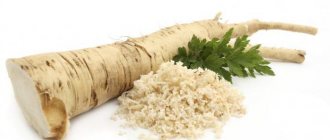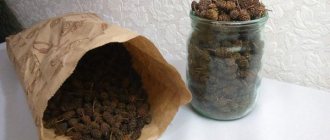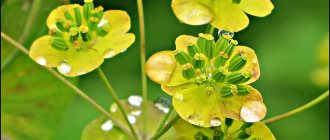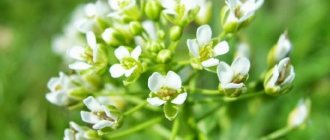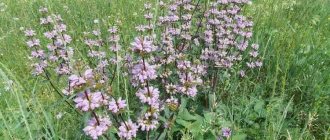Dracocephalum thymiflorum is a herbaceous medicinal plant belonging to the subfamily Nepetoideae and family Lamiaceae. People know it under other names:
- vegetable dragonhead;
- lemon balm;
- queen cell or honey cake;
- bruise and Moldavian balsam.
It is not by chance that these nicknames were given to this valuable plant: in appearance it really resembles a snake or an angry dragon ready to attack, and the nectar released in abundance makes it an excellent honey plant.
Important! The rich lemon aroma attracts bees, but repels pests. Therefore, experienced gardeners plant dragonhead thyme flower next to the beds and fruit trees.
Chemical composition of snakehead
The medicinal properties of the herb thyme-flowered snakehead are determined by the substances contained in its juice. The plant contains the following components:
- organic and tannic acids - oleic, palmitic, stearic and linoleic;
- microelements – magnesium, zinc, potassium, iron;
- essential oils;
- sugars – glucose, fructose;
- glutamic and aspartic amino acids;
- alkaloids, coumarins, flavonoids.
Important! The bulk of microelements are concentrated in the rhizomes of the plant, and vitamins and essential oils are in the green parts and buds.
Seeds of snakehead thyme are rich in organic acids and vegetable oil
Useful properties of snakehead
The beneficial effect of preparations based on dragonhead thyme is due to the presence of valuable biologically active substances in the composition - essential oils, glycosides and flavonoids. The thyme-flowered snakehead is endowed with the following medicinal properties:
- improves appetite, promotes proper digestion;
- restores and strengthens the immune system, helps the body cope with adverse external factors;
- helps normalize the functioning of the nervous system, has a calming effect, neutralizes the effects of stress;
- relieves pain from migraines and inflammatory processes;
- has a great effect on the genitourinary organs, restores their function;
- has an astringent and anticonvulsant effect;
- normalizes heart rhythm, has the ability to relieve spasms;
- excellent antiseptic, promotes wound healing;
- A decoction of the plant's seeds is excellent in soothing, reduces gas formation in the intestines, and has astringent properties;
- grass juice is an excellent antimicrobial agent that enhances the regenerative properties of the skin;
- tincture of dragonhead with alcohol improves blood circulation and dilates blood vessels;
- fresh leaves of lemon balm can be applied to purulent wounds.
Advice! For rheumatic pains and bruises, warm compresses can be applied to the sore spot from the grass of the thyme-flowered snakehead.
Snakehead thyme is used not only as a medicinal product, but also in cooking, for making exquisite perfumes
The benefits of a medicinal plant
Dragocephalum, due to its high content of essential oil and nutrients, is an effective “healer” for many diseases. This plant is very popular in both folk and traditional medicine. In folk medicine, flowers, fruits, stems, leaves and roots of the plant are used. Traditional medicine does not add snakehead to therapeutic regimens or medications, but it is often used in the production of vitamin A.
Snakehead has an extensive list of beneficial properties for both men and women:
- Wound healing property.
The plant promotes the healing of wounds, abrasions, cuts, bites and helps in the fight against various types of skin rashes. - Antispasmodic property.
An excellent assistant for pain and various disorders during menopause or premenstrual syndrome. - Anticonvulsant property.
Helps with muscle fatigue and epilepsy by relaxing muscles and relieving tension and cramps. - Calming property.
The plant is used and effectively helps with insomnia, depression, neurological disorders and overexcitement. - Anti-inflammatory property.
Treats inflammation of various parts of the body and helps fight diseases such as sinusitis, stomatitis, bronchitis and meningitis. - Restorative property.
Snakehead improves and restores the functioning of the gastrointestinal tract and improves appetite.
Also, the medicinal plant copes well with:
- Cleansing the body of harmful substances and excess fluid.
- Elimination and prevention of spasms in various diseases of the kidneys, bladder, cholecystitis and digestive disorders.
- Strengthening the immune system and replenishing calcium in the human body.
- Decrease in heart rate in case of tachycardia.
- Normalization of the human digestive system.
The beneficial and effective medicinal properties of dragocephalum help to cure or prevent the occurrence of many diseases of the female and male body. However, before using this medicinal plant, you should consult with a specialist; he will not only examine your body for contraindications to use, but will also calculate the correct dose and duration of use of snakehead.
Kalanchoe - medicinal properties and contraindications
Rules for using snakehead
For medicinal purposes, the aerial part of the thyme-flowered snakehead is usually used, and only occasionally the rhizome. The herb can be consumed fresh or dried, for making teas and decoctions, infusions of alcohol and cognac, and compresses. Orally, decoctions and infusions should be taken 20-30 minutes before meals, and tea should be drunk between meals, in case of severe hypothermia and a feeling of malaise.
We recommend reading: Mint tea: beneficial properties and contraindications, how to make
For the decoction you need to take:
- 20 g dry herb;
- 0.2 liters of boiling water.
Leave for a quarter of an hour, take 100 ml three times a day.
Preparation of tonic tea:
- 40-60 g of dry snakehead;
- 100 ml cranberry juice;
- 30 g honey;
- 1 liter of boiling water.
We recommend reading: Tea with thyme: beneficial properties and contraindications
Brew the herb, cool slightly and add the remaining ingredients. Drink hot. The snakehead should not be subjected to prolonged heat treatment, as in this case its effectiveness is greatly reduced.
In cooking, the leaves of the plant should be consumed fresh to obtain maximum benefits for the body. It is usually added to salads, desserts, and as a seasoning for first and second courses.
Comment! Snakehead thyme has a pronounced lemon aroma, so it is sometimes confused with lemon balm.
Tea from snakehead thyme flower has a pronounced general strengthening and anti-cold effect.
Types of snakehead and its external characteristics
It is no coincidence that this flower was called the snakehead. Its appearance really, in outline and shape, really resembles the head of a serpent or dragon with an open mouth.
This is a perennial herbaceous plant, but there are also annual species, such as the thyme-flowered snakehead or thyme-flowered.
They usually reach a height of fifty to seventy centimeters, the stem is tetrahedral, erect, up to fifteen millimeters in diameter at the bottom, narrows towards the top and ends in an inflorescence of pale blue or deep purple flowers. Sometimes white inflorescences are found, but this is quite rare.
The leaves of the plant are opposite, short-petiolate, oblong-oval in shape. They have a rich dark green color and jagged edges.
The dragonhead flowering time is July-August; it begins flowering from the lower inflorescences, usually producing up to five hundred flowers.
Closer to September, the snakehead begins to bear fruit, producing triangular oblong seeds of chocolate brown color.
This herbaceous plant is quite unpretentious, so its distribution area is quite large. It grows well in both cold and subtropical climates. It suits both sandy and dry, clay soil. But preference is still given to moist soil, which is why it is often found along the banks and in river valleys.
Read also: How to prepare sea buckthorn for the winter: a selection of the best recipes
The snakehead grows in the European part of Russia, Belarus and Ukraine. Distributed in Eastern and Western Siberia, as well as in the Far East. Often found in China and Mongolia, Europe and Central Asia. It grows in the Himalayas, where it can be located at an altitude of more than 2700 meters above sea level.
The genus of snakehead has a little more than forty species. But the most common plants are the following:
Also interesting is the fact that the snakehead is a honey plant. The scent of its flowers lures bees. The plant has a strong and pungent smell of lemon, so it is often confused with lemon balm, which is why it got one of its names - Turkish lemon balm.
Bees really like this aroma, but it repels many other insects that harm vegetables and fruits. Many gardeners use it in their gardens for precisely this purpose – to repel pests.
There are several varieties for growing such a crop:
Use of snakehead
Snakehead thyme flower is an excellent remedy for cleansing the body. It removes waste and toxins, improves blood composition, and has a beneficial effect on the functioning of the kidneys and liver. Also, snakehead thyme flower can be used to treat the following diseases:
- tachycardia and cardiac dysfunction;
- colds, hepatitis, rhinitis, sinusitis, tonsillitis;
- neuralgic pain;
- gastrointestinal disorders, chronic constipation, diarrhea, colitis, gastritis;
- rheumatism, nephritis;
- purulent wounds, bruises, abrasions;
- burns, ulcers, stomatitis;
- scabies, pulmonary tuberculosis;
- diseases of the female reproductive system, cystitis;
- toothache and headache.
Comment! The thyme-flowered snakehead is especially valued by healers in India and Tibet for its unique healing properties.
Collection and storage rules
Thyme-flowered snakehead blooms in early summer. It is during this period that the upper parts of the plant can be collected for the preparation of medicinal raw materials or culinary purposes. There are certain rules for collecting and preparing raw materials:
- Cut the grass at the root, choosing healthy, strong specimens.
- Sort through and remove darkened, rotten, insect- and disease-affected plant parts.
- To dry, tie them in bundles, hang them in a well-ventilated place, shaded from the sun, or spread them out on clean paper or fabric in a thin layer. Turn over daily until completely dry. Plants can be pre-chopped for ease of storage and use.
- Place the dried medicinal raw materials in paper bags or linen bags; you can use clean wooden boxes, sandwiching the herbs with paper.
Dragon's head thyme should be stored in a dark, dry place with good ventilation. If the humidity in the room is high, the dried herb may become moldy. Shelf life – 24 months. At the end of this period, the snakehead loses most of its beneficial properties and becomes unsuitable for treatment, even if no changes are observed externally.
Attention! The thyme-flowered snakehead should be collected away from sources of environmental pollution - factories, highways, burial grounds and natural landfills.
The thyme-flowered snakehead is an unpretentious plant that thrives in the Russian climate.
Moldavian snakehead in folk medicine
Infusion of snakehead
1 tablespoon of dried herb, 200 ml of boiling water, leave wrapped for 30 minutes, filter. Drink 1/2 cup in small sips three times a day before meals. For external use, take a double dose of snakehead.
Infusion of snakehead seeds
A teaspoon of seeds, a glass of water. Cook on low heat for 4 minutes, after 2 hours, filter. Use 2 tbsp. four times to treat migraines.
You may also be interested in: Wintergreen rotundifolia for women and men
Tincture of Moldavian snakehead
100g of dry raw materials, 0.5l of vodka, kept in a dark place for 2 weeks. The contents are shaken daily, then strained. Rub joints for rheumatism, neuralgia, painful areas for migraines, and use as a rinse for toothache.
Haemorrhoids
Mix equal parts of snakehead herb, St. John's wort, yarrow, dill seeds, and buckthorn bark. 1 tbsp. herbs, a glass of chilled water, leave for six hours. Then bring to a boil, cover tightly, cook for 10 minutes, cool the composition, filter. Take half a glass three times half an hour before meals.
Diabetes
Equal parts powder of snakehead, basil, lemon balm, marjoram spice, sage herb, tarragon, parsley and celery. When treating diabetes, drink a teaspoon with water before meals.
Nephritis, pyelitis, pyelonephritis, cystitis, edema of various origins
Mix the snakehead herb and basil greens. 1 tbsp. mixture of herbs, 200 ml of boiling water, infuse until cool, strain. Drink 1/4 glass five times before meals half an hour.
Diseases of the nervous system, gastrointestinal diseases, problems with the heart, liver and kidneys, for the treatment of women's diseases, bladder, for recovery after long-term illnesses
Mix in parts by volume:
- 2 parts snakehead herb
- 1 part lemon balm, red clover flowers, meadowsweet flower, linden flower
- 1/2 part St. John's wort flower, peppermint leaf and birch leaf
A tablespoon of the collection, 0.5 liters of boiled water, infuse warmly, wrapped for a quarter of an hour, decant. Drink like tea, the collection is incredibly useful.
Moldavian snakehead for women
Mix equal parts of snakehead grass, St. John's wort, and calendula flowers. 1 tbsp. herbs, a glass of boiling water, leave the container closed, boiling water bath for a quarter of an hour, cool in the room for 45 minutes. Drink two or three glasses a month before giving birth if there is a threat of miscarriage.
Hyperacid gastritis
Equal parts are Moldavian snakehead, chamomile, anise, caraway and fennel. 1 hour spoon of finely chopped mixture 200 ml of boiling water, leave wrapped for 15 minutes, strain. Drink 3 glasses per day.
